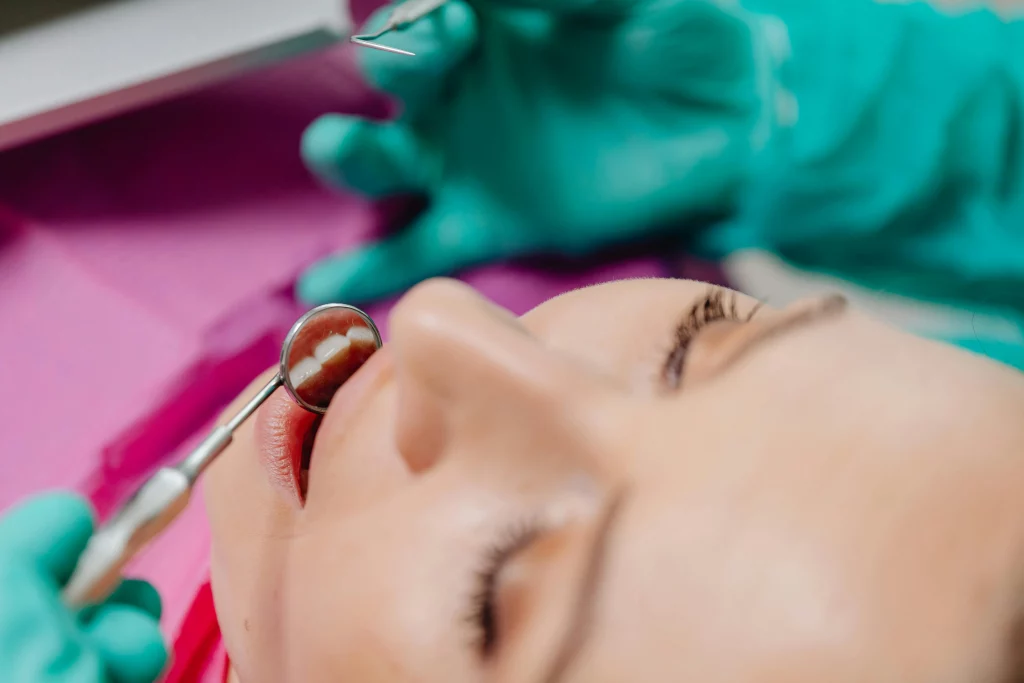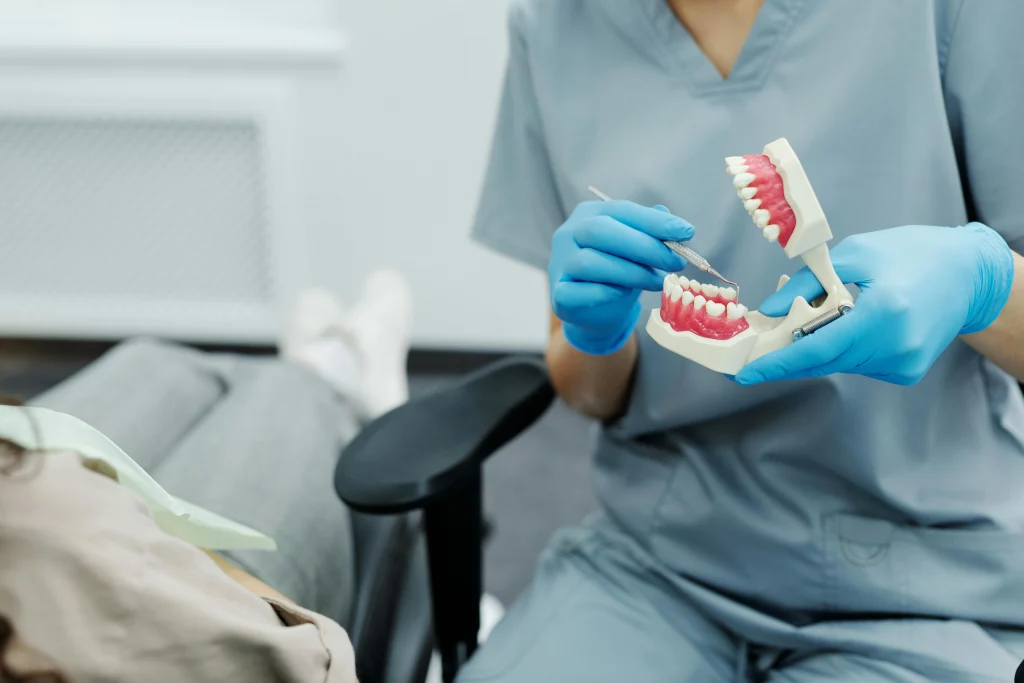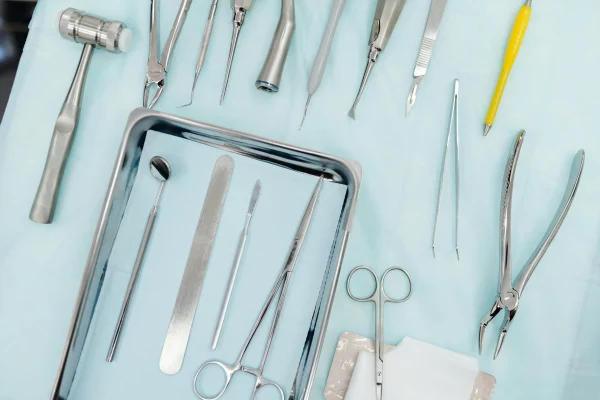Dental visits do not constitute an ordinary routine, it is a vital part of a healthy smile and health of the general mouth. Many patients ask themselves what they do when they pay such visits, and why they are so important. Knowing the process and the purpose of the check-up may assist you in eliminating anxiety, ensuring that you devote more time to taking care of your own teeth at home, and ensure that you do not spend more time in the dentist.
We are more cautious, relaxed and educative with each check up at Graham park dental. So that each visit of yours will be personal and unique and will suit your needs, we do assure you that our members can keep up with any problems that might pose a problem in future before it will become costly and difficult. Prophylactic therapy up to early diagnosis and customized therapy, in this case, the whole list of events that take place in your dentist visit- why are each of these things very important in protecting your long-term oral health.
The Purpose of Regular Dental Check-Ups

Routine dental examinations are the key to lifetime oral health. In spite of the absolute necessity of brushing and flossing at home, the reviews conducted by the professional assist in making sure that the underlying issues are revealed early enough and can be addressed in time. These visits do not resemble cleaning and help your dentist to observe what is going on with your teeth and gums, prevent future problems and help to maintain good health in general. The awareness of why you are going through those regular check-ups will help you realize the importance of the same and you will be willing to maintain your normal pattern of going to the dentist.
Preventive Care Beyond Brushing
Consistent check ups would help your dentist detect the potential problems long before they become painful, complicated and/or expensive to cure. During such visits, your dentist can identify the early stages of the accumulating plaque, small cavities, redness of the gums and a number of other minor issues which can never be seen at home. At a younger stage, treatment is less invasive and easy and much more effective. Preventive care does not only help to protect your teeth and gums, but also allows you to avoid pain and unnecessary dental costs as well as unnecessary dental costs in the future hence periodical check-ups are a good investment in your overall oral health in the long run.
Monitoring Long-Term Oral Health
The dental team also has such an extensive dental history of your oral health history throughout the years and are therefore able to notice even slight changes in your teeth, gums and the form of your bite. They periodically follow up how well you are recovering your previous procedures, how well you are doing your home care program and monitor progress of any emerging issues. It is also a powerful long term monitoring to determine the trends, wear of the enamel or a shrinking gum, or moved teeth, which could have an impact on your future oral condition.
When your dentist notices these dispositions, he or she will be in a position to come up with an active approach of ensuring that you do not get into trouble before it spins out of control and so you will be able to maintain that smile which is healthy and strong even during old age.
Overall Health Implications
The wellness can also be directly connected with oral health and regular check-ups may play a great role in determining issues beyond the teeth and gums. When dentists pay such visits, they can detect some early indicators of a systemic disease as diabetes, vitamin deficiency, autoimmune disease and infections, and in most of the instances these diseases attack the mouth first. Whether your dentist catches these symptoms in time, he/she may either insist on further examination or precautionary measures in order to ensure your health is preserved. This is not something you should brush of your own tooth once you pay your doctor a visit, but an immense weapon at the factor of your overall health.
Step-by-Step Breakdown of a Dental Check-Up
| Initial Assessment and Medical History | When you come, your dentist or hygienist examines your medical and dental history, medication or any change of your health. This gives the ability to tailor the check-up to the requirements of an individual and safety in treatment. |
| Visual Examination | The dentist checks your teeth, gums, tongue and mouth and studies them in terms of decay, infection or abnormal tissue. They examine the swelling, discolouration and the first signs of the gum disease or oral cancer. One of the main initial phases of the problem recognition, which may require further attention, is also visual inspection. |
| Professional Cleaning | The most efficient brushing and flossing sets are not able to clear the plaque and tartar. A professional cleaning has taken away these deposits and polished your teeth and made your mouth feel fresh. This is also a good procedure in preventing gum inflammation and decay. |
| X-Rays and Imaging | Depending on the dental history and the risk factors, X-rays or any other kind of imaging might be conducted to observe the visual examination of areas which are not visible during the visual examination. The images are helpful in determining the cavities, loss of the bone, affected teeth, and other structures. |
| Oral Health Advice and Recommendations | After the examination, the dentist will present the findings and give you their prescription of the way to go. This can include the accommodation of the home care, fluoride treatment, sealants, or the follow-up schedule. Training is a significant aspect of every check-up to provide the patients with powers to maintain oral health at home. |
Why Check-Ups Are Critical for Long-Term Oral Care

Early Detection of Dental Issues
It is significant to visit the dental clinic regularly to check on the problem before developing. To avoid collaborative intervention, dentists can ensure that the patients are diagnosed on time to enable them deal with their cavities, gum disease, erosion of enamel, and other oral health complications. These problems can be addressed at the initial stages before it grows into bigger processes and in the process, reduce the duration of the pain treatment, the duration of treatment and the overall cost of treatment. Regular examinations would ensure that the minor issues would not develop into severe inconveniences and would make the patients enjoy a healthier and happier smiling face in the future.
Preserving Gum Health
The problems of the gums can progress silently and without any visible expression. Regular visits to the dentist will ensure that he examines his indicators such as pocket depth, bleeding and inflammation. These symptoms are identifiable at an early age and managed to avoid occurrence of other more dreadful diseases such as periodontitis, movement of teeth and loss of bones. It has to be well cleaned to maintain your gums in good health which keeps your teeth healthy and your oral health stable in general and your smile in the long run.
Optimizing Cosmetic Treatments
Although the treatment is supposed to be cosmetic, it is imperative to optimize cosmetic treatments to reduce the effects of cosmetic surgery on the body in the long-run. Prior to a dental procedure, be it whitening, veneers, or orthodontics, it is required that one gets regular dental check-ups. They ensure that your teeth and gums are healthy so that you can comfortably go through with the treatment. Hale and hearty gums do away with the possibility of complications, in addition to improving the overall results.
At-Home Practices That Complement Check-Ups
The check-ups are subordinate to oral health between the check-ups. Even the regular routine could be adopted as the supplement to the professional care and serve to prevent the majority of the issues and keep your smile healthy and shiny. At home, you can maximize the effect of any visit to the dentist by performing good practices, which will reduce the dental impact in the long run.
Brushing and Flossing Techniques
The method used must be right to ensure that the brushing and flossing of the teeth are possible without damaging the enamel and gums. To clear the plaque on the surface, the teeth should be brushed twice a day with circular and gentle movements and to clean between the teeth which the toothbrush cannot clean, flossing to clean them daily should be done.
Depending on the type of toothbrush or floss or interdental devices that could be most helpful to you, your dentist can prescribe it and demonstrate how to use it to most effectively: to clean the most and not to harm sensitive areas. Periodic use of these procedures will help in the prevention of cavities, gum disease or other common dental issues.
Rinsing and Mouthwash
Mouth rinses which contain antimicrobials or fluoride will provide the gums and teeth with the added protection. They facilitate the destruction of bad bacteria, slackening of plaque development, and hardening of the tooth of enamel that augments the resistance of the teeth to decay. Another use of the rinsing is particularly in the hard to reach places such as between the molars or along the gum line whereby brushing and flossing might not be sufficient. Rinsing has been seen to contribute to the daily routine of brushing and flossing, and general health of the mouth.
Diet and Oral Health
The oral health demands that one eat well. The cavities, wear of enamels and aggravation of the gums will be avoided by decreasing the sugar and acidic food contents. Meanwhile, the nutritious diet, including the products rich in nutrients, i.e. green vegetables, dairy, lean meat, etc. is a powerful source of vitamins and minerals that assist in strengthening teeth and preventing the health of gums, as well as supporting the overall health of the mouth. Mindful eating combined with regular cleaning of the teeth will give a healthy and permanent smile.
Avoiding Harmful Habits
Oral health is easily compromised by the use of tobacco and snacking of food rich in sugar. Smoking or chewing of tobacco increases the risks of the gum disease, tooth deterioration and oral malignancy, and the behavior of constantly snacking on confection encourages the development of bacteria which succumb the enamel. Not only will the reduction or removal of the habits aid in taking proper care of your teeth and gums; but it will also make the regular dentistry more effective with the help of preserving a healthier and more lasting smile.
Advanced Technologies in Modern Check-Ups
The check-ups conducted in dental offices now are not limited to the traditional check-ups because it involves the new technologies that increase the accuracy of the results, comfort, and early detection. Such technologies involve digital X-rays, intraoral cameras among others which help the dentists to see things which could not have been seen using the naked eyes. Such a high-end equipment will ensure that the diagnostic is correct, the treatment more efficient, and the patients have a more comfortable experience.
Digital Imaging
Digital X-rays will aid in production of high-resolution pictures of your teeth, roots and jawbone and these will aid the dentists to detect cavities, loss of bone, impacted teeth, and other structural issues that could have not been realized during a normal check-up. They are safer as the X-rays do not need as much radiation as the normal film and they offer quicker results in addition to the fact that they have the ability of enhancing the images and zooming on them to enable the diagnosis to be achieved with a lot of accuracy.
Intraoral Cameras
High definition and close up shots of your teeth, gums are captured with intra oral cameras and this allows the patients to view the problem areas in real time. With the help of such a visual impression, you can understand your state of the oral, see the troubles early enough, and follow the recommendations of the dentist more effectively. It also enhances the kind of communication that exists between you and your dental team and thereby makes it easier to make a decision and be sure of the decision made.
Laser Diagnostics
Dental lasers are an accuracy non-invasive technique of detecting early cavities and gum disease. They will be able to detect issues that would not have been detected by visual inspection or the X-rays without difficulty or little difficulty whatsoever. It is a technology that assists in quickening the diagnostics procedure, it reduces the need of an exploratory procedure, more precise and effective treatment planning.
Frequently Asked Questions (FAQs)
1. How often should I schedule check-ups?
The majority of patients receive a dental check-up after every six months. Nevertheless, others might require more frequent checkups basing on the condition of the mouth, dental cavities of gum disease, or restorative procedure. Frequent examinations can be used to detect issues in time, when they are not painful or expensive. They also enable your dentist to track the efficacy of treatments and prevention care. Regularity of such visits helps in maintaining oral health and well being in the long run.
2. Are professional cleanings painful?
Dental cleaning performed by professional dentists is usually painless and non-painful. Mild sensitivity may be experienced in some patients particularly where a lot of plaque or tartar is present. In case of increased sensitivity, dentists can employ either local anesthesia or desensitizing treatment. The deposits that can be reached by brushing and flossing cannot be removed by the cleaning process and therefore require the cleaning. They are also used in polishing teeth, as well as in decreasing staining and also in preventing gum disease. Professional cleanings are a preventive care of the mouth which should be conducted on a regular basis.
3. Do check-ups help with teeth whitening?
Yes, before whitening, checking teeth and gums with the help of examinations is a necessity. Gums that are healthy lower the chances of being irritated in the process. Etching off the plaque and surface stains prior to the process of whitening increases the efficiency of whitening. Dentists may also prescribe the least risky whitening process of the sensitive teeth. This is a preparation that maximizes the results in addition to safeguarding the oral tissues. On the whole, check-up guarantees a healthier and happier smile.
4. Can dental check-ups detect systemic health issues?
Dental checkups may indicate a systemic condition, e.g. diabetes, vitamin deficiency, or periodontal infections. Dentists have been trained to detect such early signs, which would have otherwise not been noticed. Early diagnosis enables patients to pursue medical attention in time. Periodical visits are thus in favor of the health of the mouth, as well as well-being. This preventive measure will be of assistance to curb complications before they develop into serious complications. The condition of your overall health is really shown in your mouth.
5. What should I bring to my check-up?
Carry a list of existing drugs, past dental history, and questions, which you might need to ask your dentist. It is the information that will assist your dental team to target your needs. This is achieved by good communication that makes the visit comprehensive and personal. It can also enable your dentist to know the possible complications or sensitivities. Turning up is maximizing your time seeing the doctor. It will finally assist in delivering optimal oral health results.
Don’t wait until discomfort strikes—protect your smile before problems arise. Schedule your next dental check-up at Graham Park Dental today and experience thorough care, expert advice, and peace of mind. Your teeth and gums deserve consistent attention for a lifetime of healthy smiles.


